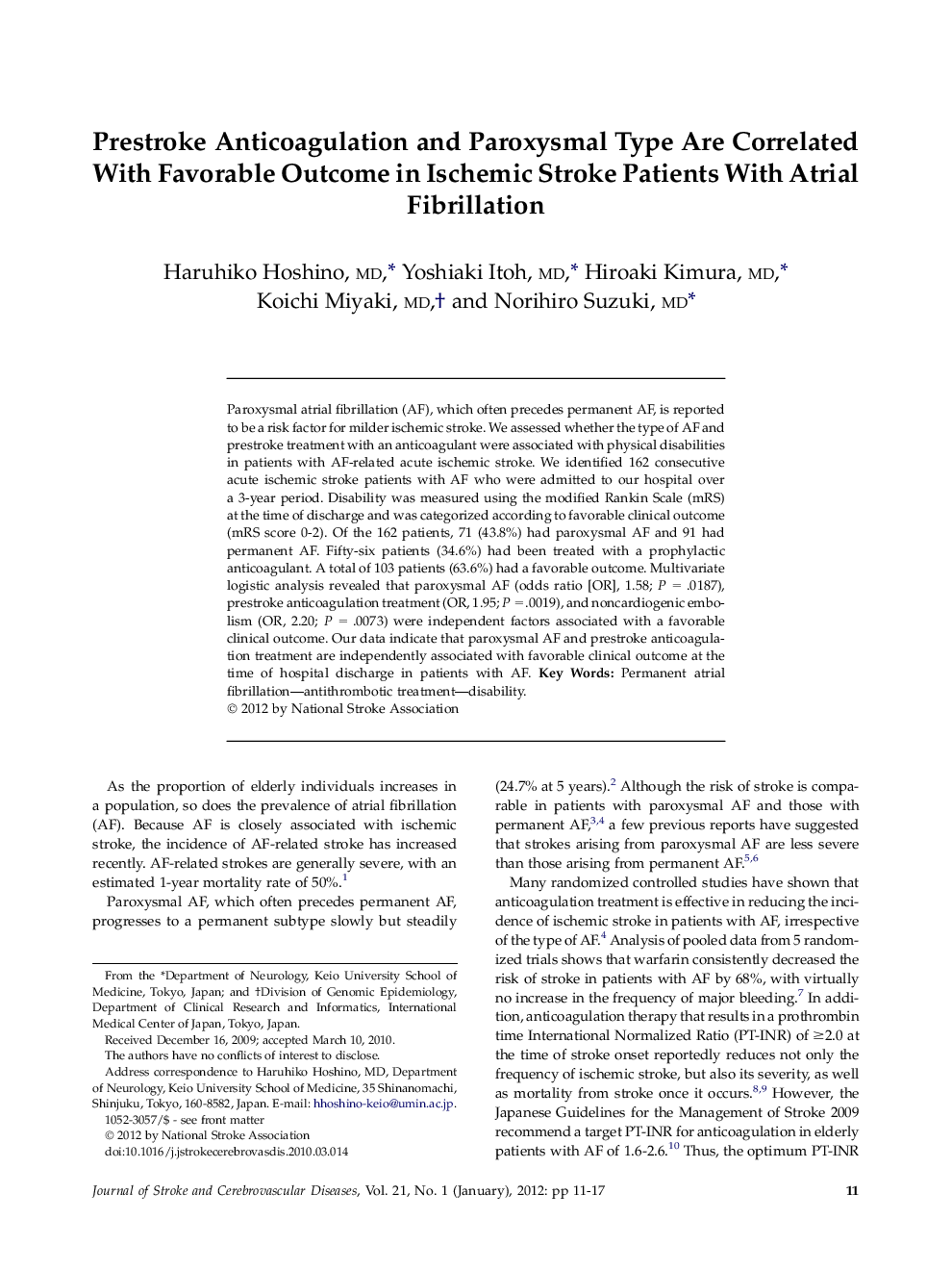| Article ID | Journal | Published Year | Pages | File Type |
|---|---|---|---|---|
| 2706486 | Journal of Stroke and Cerebrovascular Diseases | 2012 | 7 Pages |
Paroxysmal atrial fibrillation (AF), which often precedes permanent AF, is reported to be a risk factor for milder ischemic stroke. We assessed whether the type of AF and prestroke treatment with an anticoagulant were associated with physical disabilities in patients with AF-related acute ischemic stroke. We identified 162 consecutive acute ischemic stroke patients with AF who were admitted to our hospital over a 3-year period. Disability was measured using the modified Rankin Scale (mRS) at the time of discharge and was categorized according to favorable clinical outcome (mRS score 0-2). Of the 162 patients, 71 (43.8%) had paroxysmal AF and 91 had permanent AF. Fifty-six patients (34.6%) had been treated with a prophylactic anticoagulant. A total of 103 patients (63.6%) had a favorable outcome. Multivariate logistic analysis revealed that paroxysmal AF (odds ratio [OR], 1.58; P = .0187), prestroke anticoagulation treatment (OR, 1.95; P = .0019), and noncardiogenic embolism (OR, 2.20; P = .0073) were independent factors associated with a favorable clinical outcome. Our data indicate that paroxysmal AF and prestroke anticoagulation treatment are independently associated with favorable clinical outcome at the time of hospital discharge in patients with AF.
